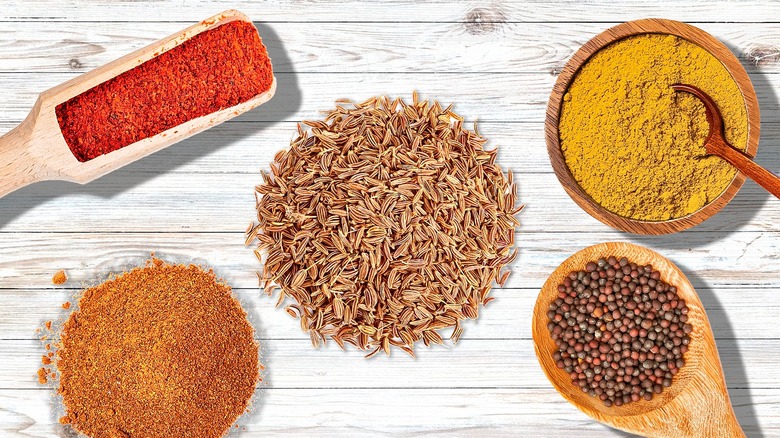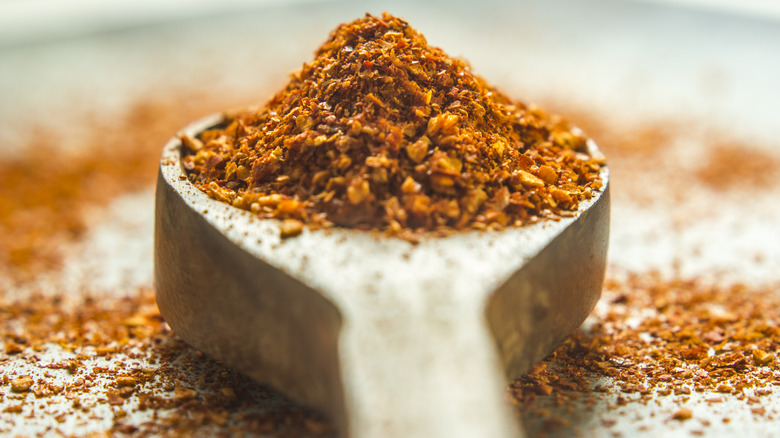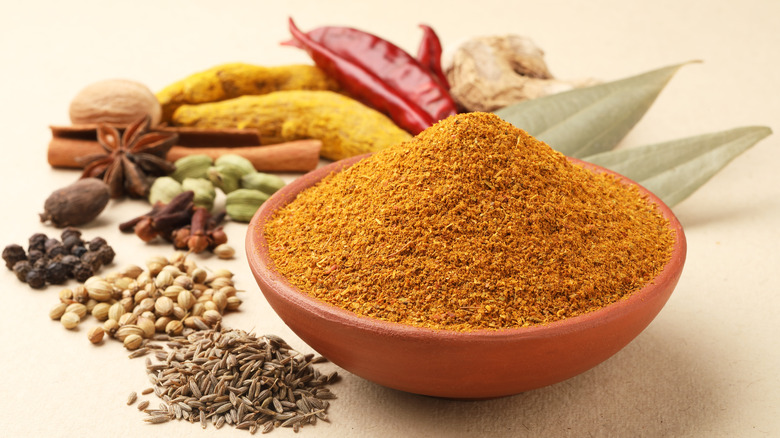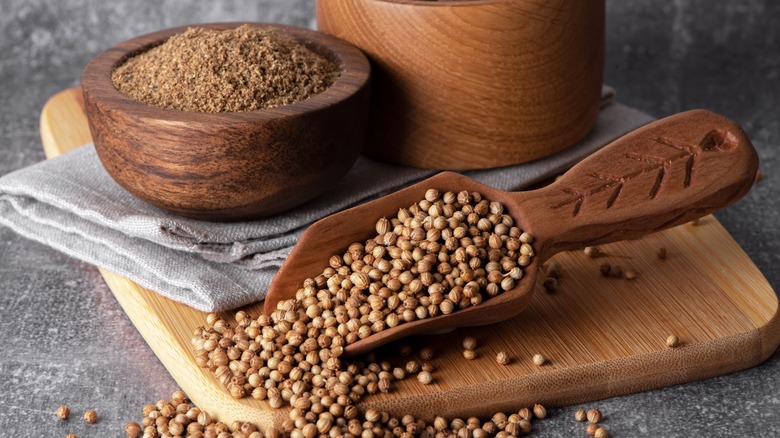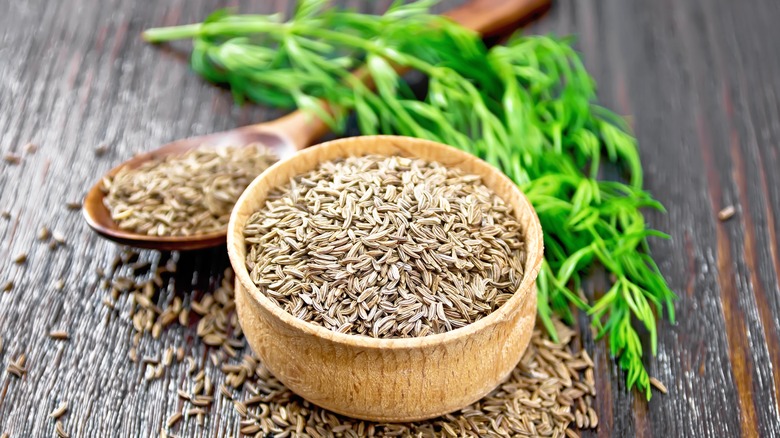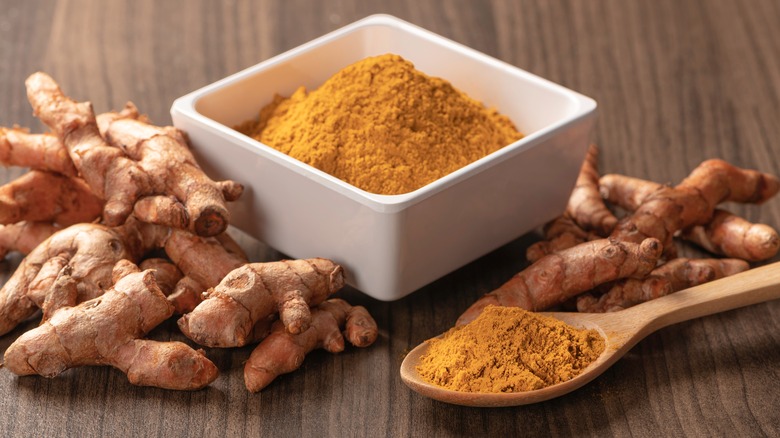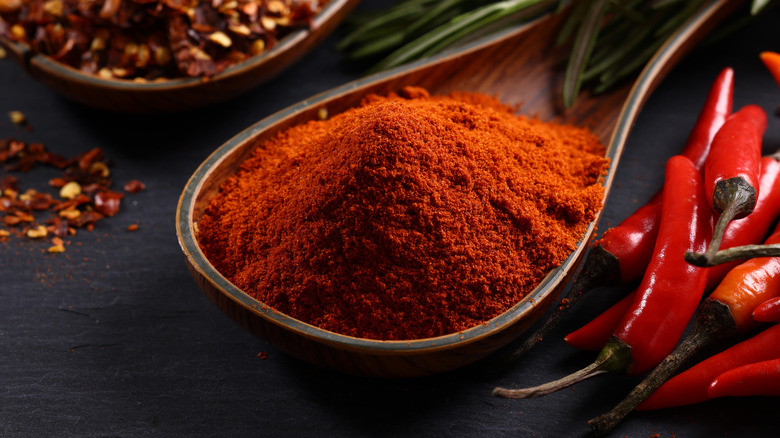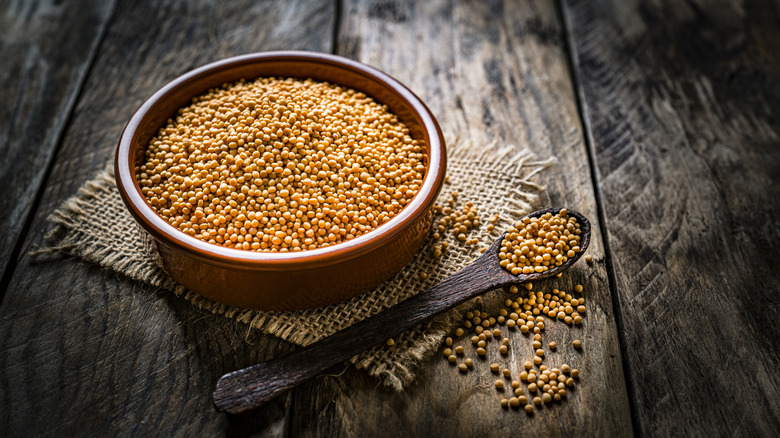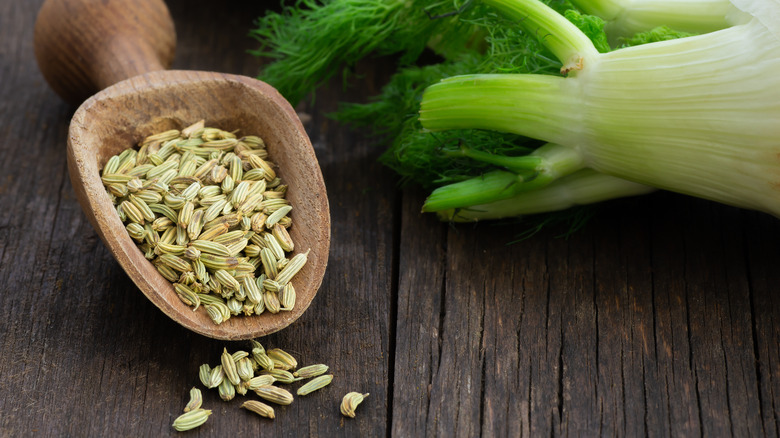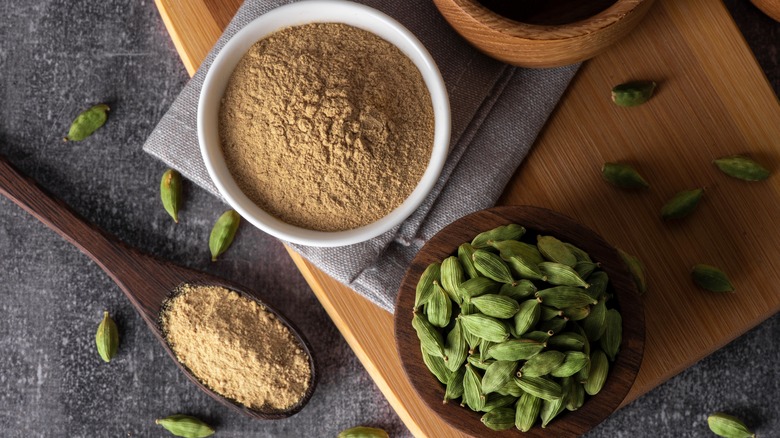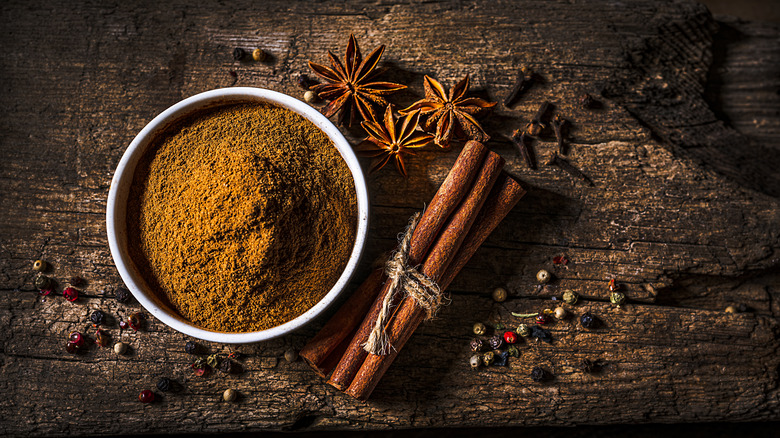12 Best Substitutes For Cumin
Cumin is one of the world's most ancient spices, originating from the seeds of the Cuminum cyminum plant. It's known for its warm, earthy flavor and aromatic qualities. Most of the world's cumin comes from India, yet as the world's second most popular spice after black pepper, cumin is a staple in cuisines worldwide, including Mexican, Indian, Middle Eastern, and Mediterranean.
But if you are out of cumin, there's no need to worry. There are many familiar alternates you can use. Cumin is often a part of diverse spice blends like curry powder, taco seasoning, and garam masala, so these blends can be convenient and logical alternatives. Individual spices like coriander, caraway, and fennel seeds share similar flavors with cumin, providing countless opportunities for clever culinary adaptations.
This article explores the world of cumin substitutes, revealing the possibilities within spice blends and individual spices that capture the essence of cumin. Whether you're looking to add depth to soups, stews, and curries, season meats, or elevate rice dishes, cumin's absence need not impede the quest of reaching rich and diverse flavors in the kitchen.
Chili powder
Chili powder makes an excellent replacement for cumin, offering a rich and flavorful option that can improve a number of dishes. The best instances to use chili powder instead of cumin are in soups, stews, chili, and Mexican or Indian-inspired cuisine.
One of the most compelling reasons it makes such a good alternative is that chili powder is made up of a blend of spices, and cumin is typically one of them. If you don't have cumin handy, using a spice blend where it's already included makes for a smart substitution.
While both cumin and chili powder offer warm and earthy flavors to your cooking, chili powder adds greater depth. Depending on your chili powder, as they tend to vary from one to another, it may include a combination of spices such as garlic, oregano, paprika, cumin, and ground chili peppers. These blends range from mild to somewhat spicy depending on the type of chili peppers used – a notable difference from cumin, which has no spice or heat. If you want full control of what's in your chili powder and have confidence in its ability to stand in for cumin, you could start making your chili seasoning at home.
Curry powder
Another spice blend that makes a suitable alternative to cumin is curry powder. Curry powder blends turmeric, coriander, cumin, fenugreek, mustard seed, black pepper, cinnamon, and cayenne to create flavors reminiscent of Indian dishes.
But it's impossible to say exactly what makes up curry powder because this mix of spices varies widely, and there is no clear definition of what may be included. And although we associate curry powder with Indian cooking, the true origins of curry powder are more complex.
Cumin is commonly a part of curry powder, and for that reason, it's a good substitution. Curry powder can contribute a more complex range of flavors than cumin, including savory, sweet, earthy, and even bitter notes to your cooking. And if you use a curry powder with cumin, you'll still get the essence of the spice. Try using curry powder instead of cumin in Indian, Thai, and Middle Eastern recipes.
Taco seasoning
Cumin is an essential ingredient for making tacos, without which the dish's taste would not be the same. However, if you cannot find cumin or run out, you can use taco seasoning as an ideal substitute. That's because cumin is one of the key ingredients in a taco seasoning mix.
Although taco seasoning blends vary from brand to brand, they usually contain cumin, chili powder, garlic powder, onion powder, paprika, oregano, and sometimes cayenne. If you find one with cumin and chili powder on the ingredient list, it would be an especially good alternative for cumin, as chili powder also contains cumin, and there is likely a good deal of it in the blend. Apart from using taco seasoning for tacos, it is an excellent ready-made seasoning for Mexican and Southwestern-inspired cuisine. You can use it in fajitas, soups, stews, and even casseroles, where cumin is commonly found.
Garam masala
Garam masala is a blend of dry-roasted ground spices from the colder region of northern India. Its name translates to "hot spice," but it's not referring to a spicy kind of heat; rather, it's a complex blend of spices that offer warmth and complexity.
There are many variations of the ingredients in garam masala, and it may contain as many as 12 different spices. One of these is cumin, which is why garam masala is a good substitute for cumin in Indian cooking. Other spices you may find in garam masala include black pepper, cinnamon, cloves, coriander, cardamom, chiles, fennel, and nutmeg.
When substituting garam masala for cumin, you'll want to remember that the flavor profile is much more complex and diverse. Because it may contain some amount of cumin already, it can offer some of that earthy essence, but it will also add more sophistication and interest. Consider using garam masala as an alternative for not just cumin, but in instances where cumin and several other similar spices are present, such as curries, stews, and rice dishes. If you can't find it in the grocery store, garam masala is a staple ingredient at Indian markets.
Coriander
Derived from the seeds of the cilantro plant, coriander makes a decent substitute for cumin, offering a distinctive yet complementary flavor that can boost various dishes. Although these two ground spices are often confused, the difference is that cumin boasts a warm and earthy essence, while coriander brings a citrusy, floral, and slightly sweet note to your cooking.
The versatility of coriander allows it to seamlessly replace cumin in a wide range of culinary applications. Its citrus undertones contribute a unique complexity that works well with numerous cuisines, including Mexican, Indian, Middle Eastern, and Southeast Asian. Ground coriander can be used in equal amounts as a substitute for ground cumin for extra depth and brightness in your spice rubs, curries, stews, tacos, and marinades.
This substitution is a good choice for those who find cumin's flavor too strong and want something milder and fresher tasting. As with any substitution, you'll want to experiment with using coriander instead of cumin to see how you like the change in flavor. When in doubt, you can always use a bit less to start and give your food a taste before adding more.
Caraway
Caraway is a type of seed most commonly known as the ingredient that gives rye bread its unique flavor. However, it has a unique and aromatic flavor that can be used in various dishes, such as cheeses, stews, meats, and vegetables. It is often compared to cumin, as they belong to the same plant family and have warm and earthy notes that can add depth to various dishes.
It's important to note that caraway is more potent than cumin and can easily overpower other flavors in a dish. Therefore, starting by using half as much caraway as you would use cumin in your cooking is a good idea. This way, you can taste the dish, gradually add more caraway to suit your preferences and ensure the flavor is balanced with the rest of the ingredients.
Caraway seeds are often sold and used whole, while cumin is typically used ground. When using caraway instead of cumin, be sure it is first ground in a spice grinder or with a pestle and mortar.
Turmeric
Turmeric, a spice native to the Indian subcontinent and Southeast Asia, has a rich history of use in cooking and traditional medicine. It has a striking flavor profile that is slightly bitter and peppery, making it an excellent substitute for cumin in dishes from the same regions.
One of the most notable characteristics of turmeric is its vibrant golden color, which can add a beautiful hue to any dish. In addition, turmeric can add depth of flavor and elevate the taste of dishes like cumin. It can do everything from giving sautéed ingredients a gentle boost of umami to elevating a simple pot of white rice.
Since turmeric is a mild spice that comes from a root similar to ginger, you can easily use an equal amount of it in place of cumin, and then add more as needed. It is important to note that the ground and dried version of turmeric should be used instead of the fresh turmeric root. You can easily find ground turmeric in the spice section of most grocery stores. If you find that turmeric isn't giving you the full experience as cumin, you could try using it with other complementary spices, such as coriander. This can help enhance the dish's flavor and create a more complex profile.
Paprika
Although paprika and cumin are quite different spices, they can serve similar functions in your cooking. While cumin is a ground seed, paprika is made of finely ground sweet red peppers. Regardless, they provide full-bodied flavor, depth, and character wherever deployed.
You may expect paprika to be spicy because it is made from peppers. However, the common variety of paprika in your standard supermarket spice aisle is extremely mild. Because of this, you'll want to use an equal amount of paprika, if not more, as a cumin replacement.
Or you may want to consider seeking more interesting varieties of paprika that can offer more complex flavors like cumin. For instance, Hungarian paprika is bolder, while smoked paprika brings extra richness and earthiness. Although paprika is commonly used as a garnish for foods like hummus or deviled eggs, you'll want to use it in the same manner as you would cumin.
Mustard seed
We all know mustard as a condiment for hotdogs and hamburgers. But did you know mustard seeds are used as a spice to flavor everything from Indian cuisine to pickles? Like cumin, mustard seeds contribute a sense of earthiness and warming that enhances a variety of foods.
However, if you've ever had a spicy mustard, you'll know that mustard seeds can have a bit of a bite to them. They're more pungent and tangy than cumin, and you'll want to remember this when using them as a substitution. If you are substituting mustard seeds for cumin in a recipe with spicy ingredients, you may need to reduce the amount to avoid an overly spicy dish.
Start by using half as much ground mustard seed in place of cumin in a recipe. You can always add more if needed. Ensure the seeds are ground well, as whole mustard seeds are too pungent whole to work well in place of cumin. Alternatively, mustard powder, which is simply ground mustard seeds, may be easier to find in most stores.
Fennel seed
If you want to add a touch of depth to your dish and experiment with new flavors, you might consider using fennel seed as a substitute for cumin. These seeds, which are oval in shape, have a unique taste that is both sweet and licorice-like. They are derived from the flowers of the common fennel plant and are widely used in many Mediterranean, Indian, and Middle Eastern cuisines where cumin is commonly used. However, unlike cumin, fennel seeds can add flavor to sweet and savory dishes.
If you're comfortable with extra texture in your food, you can use whole fennel seeds instead of cumin. Alternatively, if you want to release more flavor, chop them up before using them. In any case, it's best to start by using half as much fennel seed as you would cumin, as their flavor is quite potent and can easily overpower a dish if too much is used.
Cardamom
While cardamom may not be the first spice that comes to mind as a substitute for cumin, it has some similarities that may surprise you. This spice is native to India and tropical regions, and it's composed of tiny seeds that are contained within pods. The seeds are removed from the pod and can be used whole or ground.
Cardamom has a unique flavor profile that makes it an interesting choice as a substitute for cumin. It has a bright, sweet flavor with a refreshing, aromatic quality that contains some citrus notes like cumin. It also has a warming property similar to cumin, making it an excellent option for many dishes.
When using cardamom in place of cumin, it's important to note that a little goes a long way. Start with a quarter of the amount of cardamom for cumin and adjust as needed. Some instances where cardamom would make a suitable substitute include stews, curries, vegetables, and rice dishes. Keep in mind that cardamom has a unique flavor, so it may not work as a substitute in every recipe.
Cinnamon
Cinnamon can be a surprisingly interesting substitute for cumin in some recipes. While cumin has a particular earthy flavor, cinnamon adds a warm and sweet taste that can equally increase the depth and complexity of your dishes.
Derived from the bark of tropical evergreen trees, cinnamon is a popular spice known for its unique flavor and health benefits. When using it as a cumin replacement, start using half as much as you would since cinnamon has a distinct sweet taste that cumin does not. As a result, you may want to adjust the amount of other sweet ingredients or spices in the recipe to balance out the flavors.
Using cinnamon instead of cumin can be a great way to add a twist to your favorite dishes and experiment with new flavors. So the next time you're out of cumin or want to try something new, consider reaching for cinnamon and see how it transforms your recipe.
